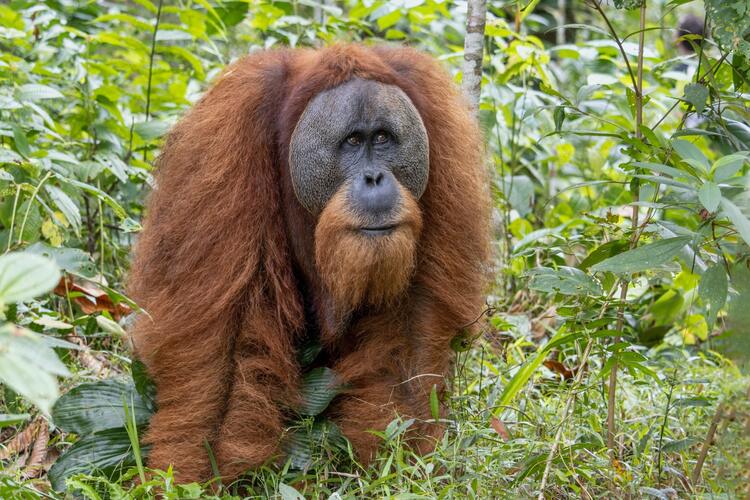
A new study finds that a giant prehistoric ape became extinct after climate change depleted its food supply
By
Ferreting through the dusty cabinets and drawers of a traditional Chinese medical store in Hong Kong in 1935, Ralph von Koenigswald stumbled upon something wholly unexpected. Two giant molar tooth from an ape. Far bigger than the tooth of any living ape, Koenigswald knew he’d stumbled upon something unique.
It turned out that the tooth he’d found came from a giant extinct ape previously unknown to science that was eventually named Gigantopithecus blacki. It lived in the tropical forests that coated the hills of southern China and, with its reddish fur, it looked a lot like a giant orangutan, albeit one that spent much of its time on the forest floor in the manner of a gorilla. It stood up to three metres tall and weighed over a quarter of a tonne. Despite its fearsome dimensions, it was a hundred per cent vegetarian, and to power that mighty frame, it needed a lot of food.
And, according to a new study published in the journal Nature, its sheer size and constant need of food, might have led to its downfall. ‘It’s just a massive animal – just really, really big,’ said Renaud Joannes-Boyau, a researcher at Australia’s Southern Cross University and co-author of the study. ‘When food starts to be scarce, it’s so big it can’t climb trees to explore new food sources.’
The scientists behind the study think that food did start to become scarce and the reason why was climate change.
We’ve only ever found the teeth of these animals, as well as four large lower jaw bones and most of these remains have been found in caves. By analysing pollen samples and sediments from these caves, as well as teeth from the giant ape, the team behind the study have discovered that around 600,000 years ago the climate turned drier and the trees in the apes’ forests began to produce fewer and fewer fruit. But, being such a large creature, scientists have concluded that while younger, smaller Gigantopithecus blacki could climb up into the trees to gather the precious fruit growing higher up in the branches, for the adults it was much harder. The scientists discovered that the adults had to eat more tree bark, reeds and other non-nutritious foods to compensate.
‘When the forest changed, there was not enough food preferred by the species,’ said co-author Zhang Yingqi from China’s Institute of Vertebrate Palaeontology and Palaeoanthropology and gradually Gigantopithecus blacki started to die out. But even so this wasn’t a quick process and they didn’t finally become extinct until sometime between 215,000 and 295,000 years ago.
Related articles:




